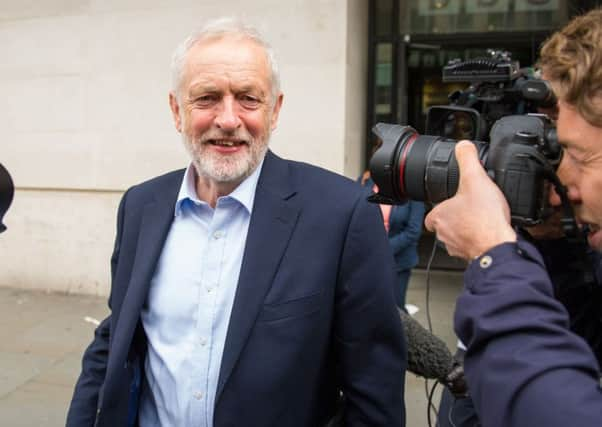YP Comment: Corbyn comes under fire again - Labour repeats Trident backing


Speaking on The Andrew Marr Show, on BBC 1, Mr Corbyn said “all aspects” of defence would be reviewed if he won power when questioned on the matter. Cue the hastily released statement.
Mr Corbyn is a lifelong supporter of unilateral nuclear disarmament and last year he was forced to abandon his attempts to persuade the party to back his unilateralist position in the face of strong opposition.
Advertisement
Hide AdAdvertisement
Hide AdHis latest comments threaten to reopen old wounds and will give further ammunition to Tory leaders who are seeking to make Mr Corbyn’s fitness for office a focus of their election campaign. They came as Conservative Party chairman Sir Patrick McLoughlin launched a stinging attack on the Labour leader saying he was “not suitable” to be prime minister.
The election campaign is less than a week old and already Labour has been pushed on to the back foot. Some people may admire Mr Corbyn’s principled stance on this issue but the fact of the matter is you simply cannot have a leader at odds with his party’s own official policy.
During a visit to Yorkshire at the weekend, deputy leader Tom Watson attempted to quell unrest among the ranks by calling for supporters to unite during the General Election campaign.
However, if the Opposition party and its leader cannot agree on a single clear message on such a key issue as their nuclear policy, then what chance do they have of convincing the electorate they’re fit to govern the country?
Rail’s renaissance
Advertisement
Hide AdAdvertisement
Hide AdThere are few finer sights than seeing Flying Scotsman steaming through the Yorkshire countryside and yesterday the world-famous locomotive was joined by three modern trains to celebrate the “past, present and future” of rail travel on the East Coast main line.
Watched by thousands of railway buffs, the trains travelled along a flat stretch of the route between Tollerton and York station, with Flying Scotsman joined by an HST Intercity 125 (Class 43) and an Intercity 225 (Class 91) from Virgin Trains’ current fleet, as well as one of the operator’s Azuma trains, which come into service next year.
It was a reminder not only of our pioneering railway heritage but also the importance of train travel in this country and the East Coast main line in particular. Last month, Virgin Trains announced it was extending its half-hourly weekday service between Leeds and London to a Saturday, meaning there will be an additional 600,000 seats a year - testimony to the route’s strategic importance.
Fifty years after the short-sighted Beeching cuts that destroyed so much of the country’s rail infrastructure, it is ironic that a record number of people now travel by train each day. However, we do at least seem to be heading in the right direction and with our roads increasingly clogged up new railways are vital if capacity is to be increased across the whole network.
Advertisement
Hide AdAdvertisement
Hide AdBob Gwynne, associate curator at the National Railway Museum, talked yesterday about the railways undergoing a “renaissance” in this country. We must hope that he is right, though there’s still a long way to go before we can say they’re back on track.
Rare plants at risk of extinction
Ours is a green and pleasant land, home to a rich variety of animal and plant life. But are we taking it for granted? According to the conservation charity Plantlife, some of the UK’s rarest plants face extinction unless more is done to protect the road verges that have become their final refuge.
Britain’s grass verges are home to more than 700 species of wild plants, alarmingly, though, one in eight are now either threatened with extinction or are heading towards it. Many of these verges were once part of ancient hay meadows and grasslands, most of which have vanished from our countryside over the last 80 years.
It may seem insignificant given the wider environmental challenges we face, however wildflowers are a last bastion for many declining bee, butterfly and bird species, and if we don’t better protect our wild plants and flowers we risk losing them, making us all the poorer.